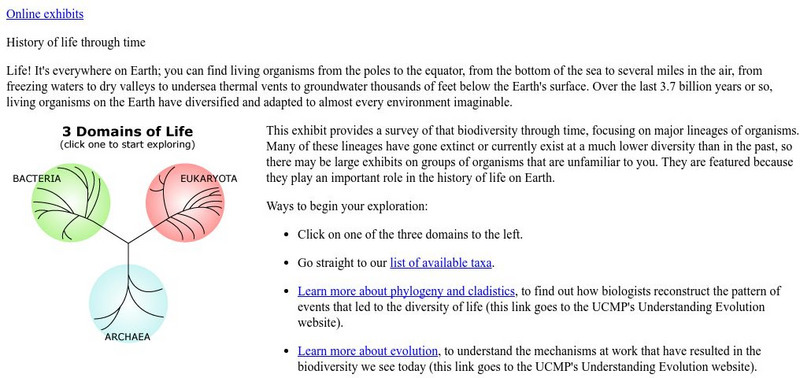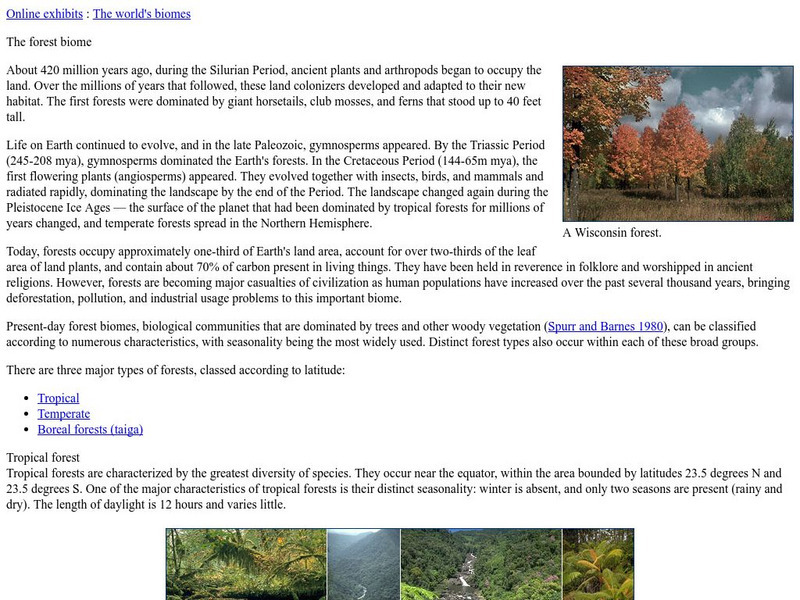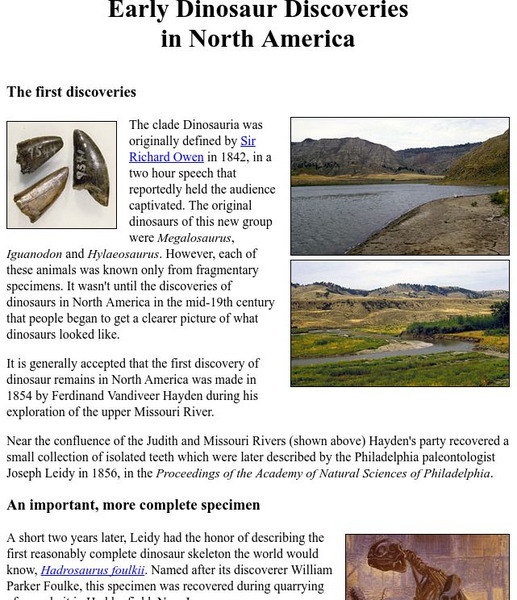University of California
Ucmp: Glossary of Natural History
A glossary of useful terms, including "abyssal plain" and related terms.
University of California
Ucmp: The Biosphere: Life on Earth
Learn about different forms of life that coexist with us on Earth. This Berkeley article provides links to brief write-ups on the three domains of living organisms: Eukaryota, Bacteria, and Archaea.
University of California
Ucmp: Introduction to Trilobita
One of the most famous fossil organisms, trilobites were once a complex group. Learn to tell them apart in this illustrated article that tells how they lived, their body structure, there place in evolution, and the like.
University of California
Ucmp: A History of Evolutionary Thought
Museum site note on the history of evolutionary thought and includes scientists and thinkers who have contributed to our understanding of life on Earth. Links are provided for da Vinci, Linneaues, Erasmus Darwin, and others.
University of California
Ucmp: Welcome to the Dinobuzz
Site details with the current topics concerning dinosaurs. Site covers dinosaur speeds, dinosaur extinction, warm-blooded dinosaurs and more.
University of California
Ucmp: More on Morphology
A concise site that describes the four basic features that all chordates share.
University of California
Ucmp: Creating an Earth System: Interactions in the Earth System
A brief description of the four spheres of the Earth, with an activity where students brainstorm interactions among them.
University of California
Ucmp: Haracteristics
Brief, but thorough overview of the temperate deciduous forest. Lists of flora and fauna found in the forest.
University of California
Ucmp: Early Dinosaur Discoveries in North America
This survey of early dinosaur discoveries in North America discusses the first dinosaur specimens and the scientific debate that they inspired.
University of California
Ucmp: Placental Mammals
This brief article defines "placental mammals," lists examples of these animals, and describes the characteristics which render their classification.











